
MEAN Web Development - Second Edition
¥80.65
Develop your real-time MEAN application efficiently using a combination of MongoDB, Express, Angular, and Node About This Book Construct a fully-functional MEAN application by using its components along with the best third-party modules Harness the power of the JavaScript ecosystem to effectively run, build, and test your MEAN application Gain a deep, practical understanding of real-time web application development through real-world examples Who This Book Is For If you are a JavaScript developer who is interested in building modern web applications using MongoDB, Express, Angular 2, and Node 5.0, then this book is for you. You only need knowledge of JavaScript development. What You Will Learn Use MongoDB to store and retrieve your application's data Connect your Express application to MongoDB and use the Mongoose module Manage your users' authentication and offer them diverse login options using Passport Structure and use an Angular 2 application in your MEAN project Use Socket.io to create real-time communication between your client and server Test your application's Express and Angular 2 entities In Detail The MEAN stack is a collection of the most popular modern tools for web development that helps you build fast, robust, and maintainable web applications. Starting with the MEAN core frameworks, this pragmatic guide will explain the key concepts of each framework, how to set them up properly, and how to use popular modules to connect it all together. By following the real-world examples shown in this tutorial, you will scaffold your MEAN application architecture, add an authentication layer, and develop an MVC structure to support your project development. You will learn the best practices of maintaining clear and simple code and will see how to avoid common pitfalls. Finally, you will walk through the different tools and frameworks that will help expedite your daily development cycles. Watch how your application development grows by learning from the only guide that is solely orientated towards building a full, end-to-end, real-time application using the MEAN stack! Style and approach This comprehensive guide covers every part of the MEAN stack, and focuses on the gestalt power of the apps they can create through practical, real-world examples
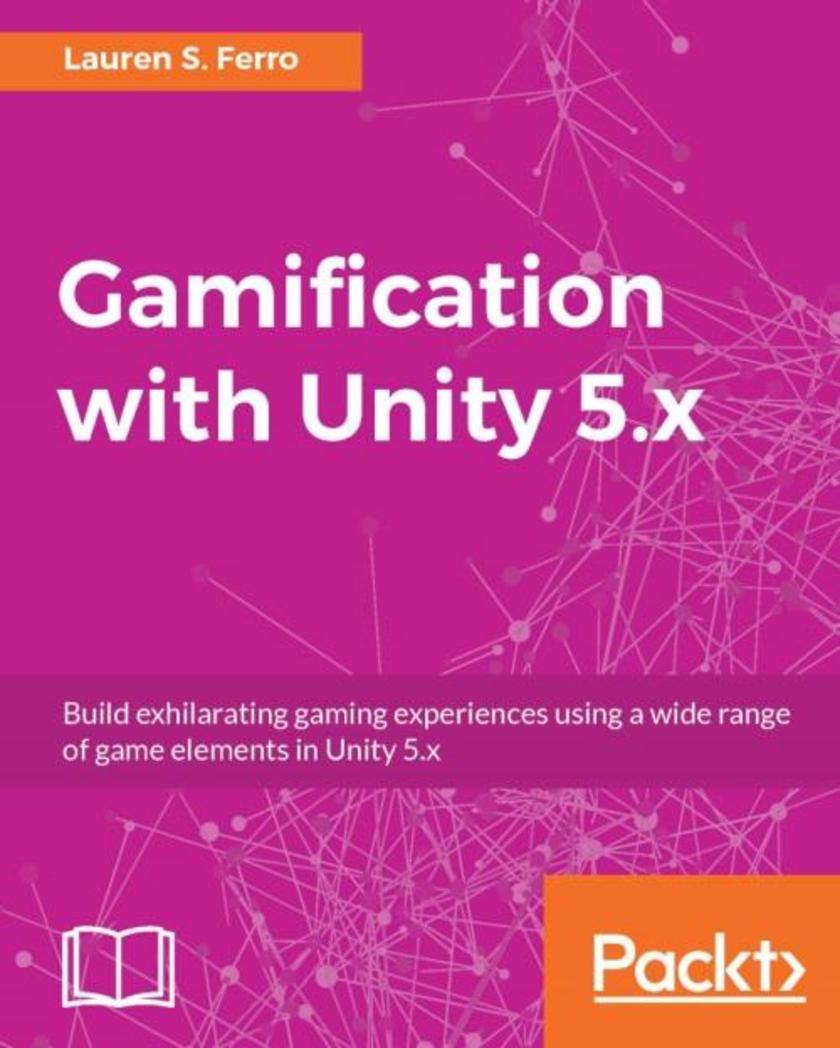
Gamification with Unity 5.x
¥80.65
Build exhilarating gaming experiences using a wide range of game elements in Unity 5.x About This Book Achieve your goals in a fun-filled way by creating gamification projects from scratch Leverage the Unity 5.X toolkit to create stunning and appealing projects Make your transition towards a pro project manager/ developer by learning tricks and techniques Who This Book Is For If you are a project manager, game developer, or programmer who wants to create successful end-to-end gamification projects from scratch, then this is the book for you. You do not need any previous experience of working with Unity 5.X. All the details required to make the most of gamifying your projects are provided in the book. What You Will Learn Assess your learners’ abilities by setting up challenges and quests Implement the game elements that relate to the project into Unity Publish your own task management application to better engage readers Improve your design using methods of playtesting and iteration Issue OpenBadges to recognize achievements and set up an online database to store your users achievements. In Detail Are you looking at implementing gamification techniques for your business and wondering where to get a complete rundown of all the tricks and techniquesWell, you have come to the right place! This book will start right from the basics such as gameplay elements and their functionalities before gradually moving onto creating your first gamification project from scratch. You’ll be given the tools and shown how to perform various techniques for creating gamified applications in different contexts. Finally, you will implement various game elements into Unity, publish your own task management application, and get to know the best practices and approaches when designing gamified experiences. Style and approach This book takes a real-world case studies approach, moving ahead in a step-by-step tutorial manner. You will create your own project from scratch, and the practical examples will help you create a successful gamification project.
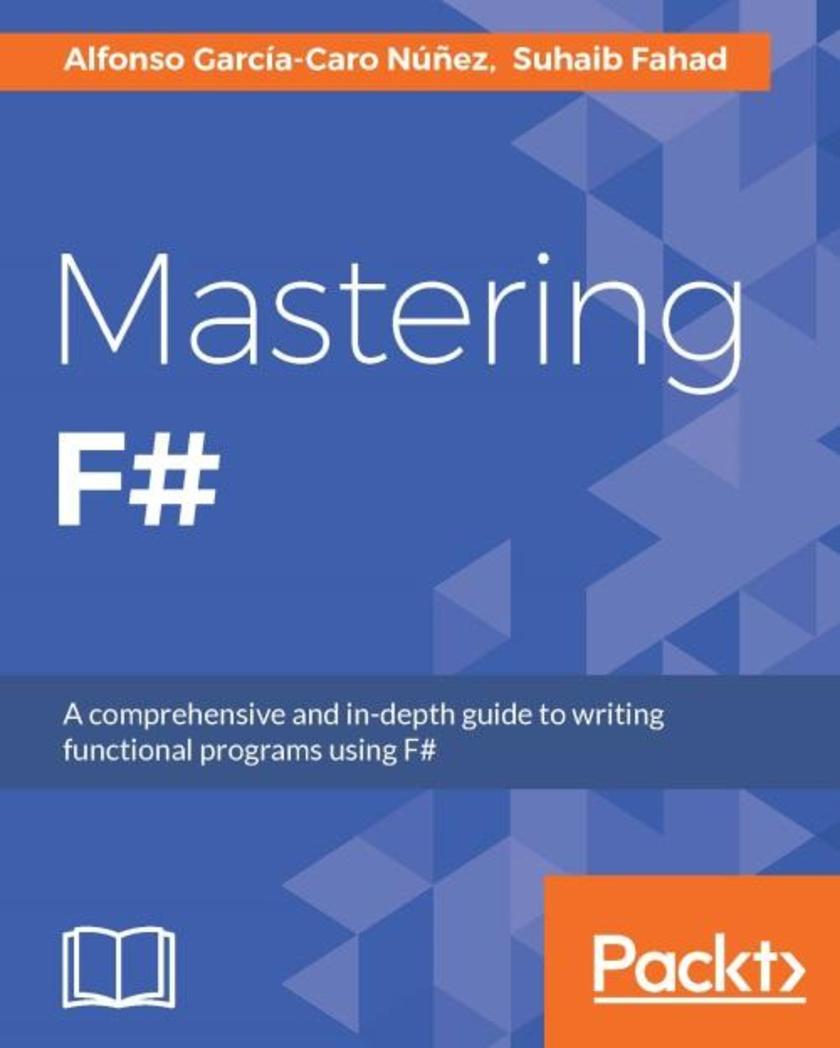
Mastering F#
¥80.65
A comprehensive and in-depth guide to writing functional programs using F# About This Book Learn how to manage, run, and automate your servers using Puppet Explore how to use F# to develop large-scale applications quickly and simply, and become more productive in today’s age of cloud computing and multi-core programming This easy-to-follow guide is packed with real-world examples that will jump-start you with F# development on the .NET platform Who This Book Is For If you are a C# developer with a basic knowledge of F# and want to explore the functional programming paradigm further to master your F# skills, then this book is for you. What You Will Learn Understand the basics of F# and organize F# source code with Visual Studio Work with F# data structures and create functional data structures in F# interoperate with C# Build and use asynchronous programming patterns with F# Create and use type providers that help perform data analysis from within Visual Studio Develop applications with pure F# code in WPF or ASP.NET MVC Find out how to perform distributed programming with ServiceBus or ZeroMQ Visualize data with charts, and work with Excel and R language Type providers In Detail F# is a multi-paradigm programming language that encompasses object-oriented, imperative, and functional programming language properties. Now adopted in a wide range of application areas and is supported both by industry-leading companies who provide professional tools and by an active open community, F# is rapidly gaining popularity as it emerges in digital music advertising, creating music-focused ads for Spotify, Pandora, Shazam, and anywhere on the web. This book will guide you through the basics and will then help you master F#. The book starts by explaining how to use F# with Visual Studio, file ordering, and the differences between F# and C# in terms of usage. It moves on to explain the functional core of F# such as data types, type declarations, immutability, strong type interference, pattern matching, records, F# data structures, sequence expressions, and lazy evaluation. Next, the book takes you through imperative and asynchronous programming, F# type providers, applications, and testing in F#. Finally, we look into using F# with distributed programming and using F# as a suitable language for data science. In short, this book will help you learn F# for real-world applications and increase your productivity with functional programming. Style and approach This easy-to-follow guide with syntaxes will help you master the concepts of F#. Packed with in-depth examples of real-world uses, this book covers each topic in detail with a reference to C#, so you will understand the difference between the languages.
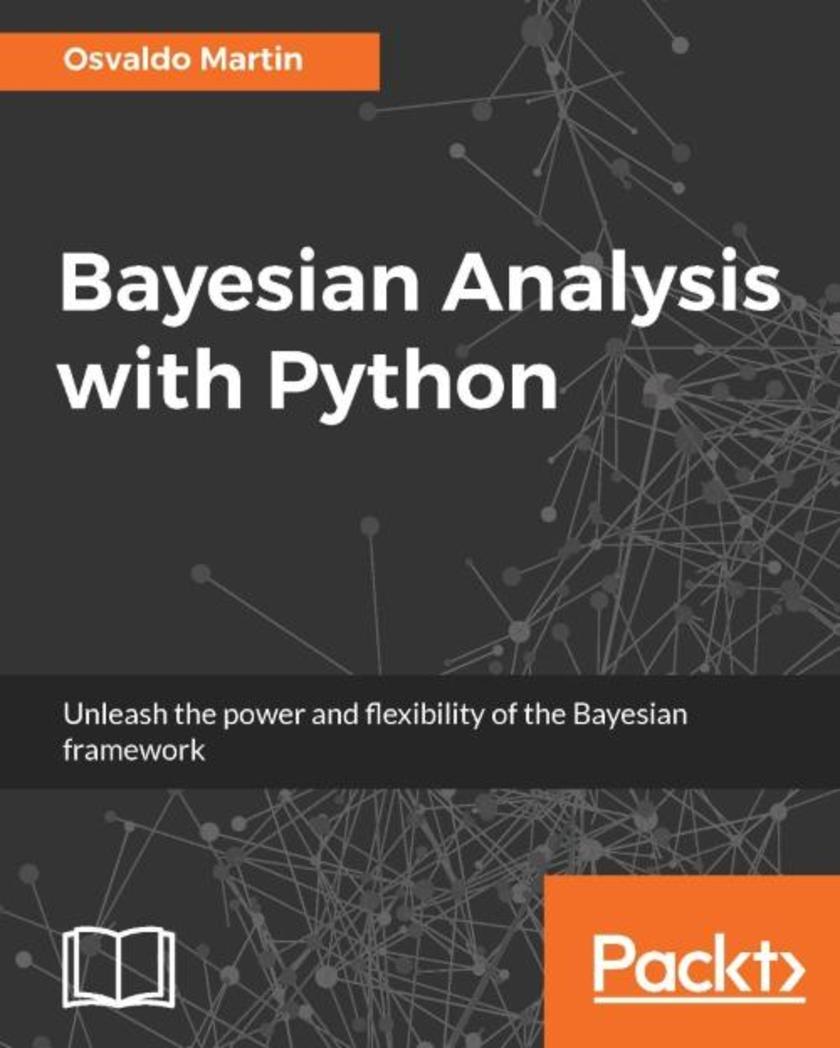
Bayesian Analysis with Python
¥90.46
Unleash the power and flexibility of the Bayesian framework About This Book Simplify the Bayes process for solving complex statistical problems using Python; Tutorial guide that will take the you through the journey of Bayesian analysis with the help of sample problems and practice exercises; Learn how and when to use Bayesian analysis in your applications with this guide. Who This Book Is For Students, researchers and data scientists who wish to learn Bayesian data analysis with Python and implement probabilistic models in their day to day projects. Programming experience with Python is essential. No previous statistical knowledge is assumed. What You Will Learn Understand the essentials Bayesian concepts from a practical point of view Learn how to build probabilistic models using the Python library PyMC3 Acquire the skills to sanity-check your models and modify them if necessary Add structure to your models and get the advantages of hierarchical models Find out how different models can be used to answer different data analysis questions When in doubt, learn to choose between alternative models. Predict continuous target outcomes using regression analysis or assign classes using logistic and softmax regression. Learn how to think probabilistically and unleash the power and flexibility of the Bayesian framework In Detail The purpose of this book is to teach the main concepts of Bayesian data analysis. We will learn how to effectively use PyMC3, a Python library for probabilistic programming, to perform Bayesian parameter estimation, to check models and validate them. This book begins presenting the key concepts of the Bayesian framework and the main advantages of this approach from a practical point of view. Moving on, we will explore the power and flexibility of generalized linear models and how to adapt them to a wide array of problems, including regression and classification. We will also look into mixture models and clustering data, and we will finish with advanced topics like non-parametrics models and Gaussian processes. With the help of Python and PyMC3 you will learn to implement, check and expand Bayesian models to solve data analysis problems. Style and approach Bayes algorithms are widely used in statistics, machine learning, artificial intelligence, and data mining. This will be a practical guide allowing the readers to use Bayesian methods for statistical modelling and analysis using Python.
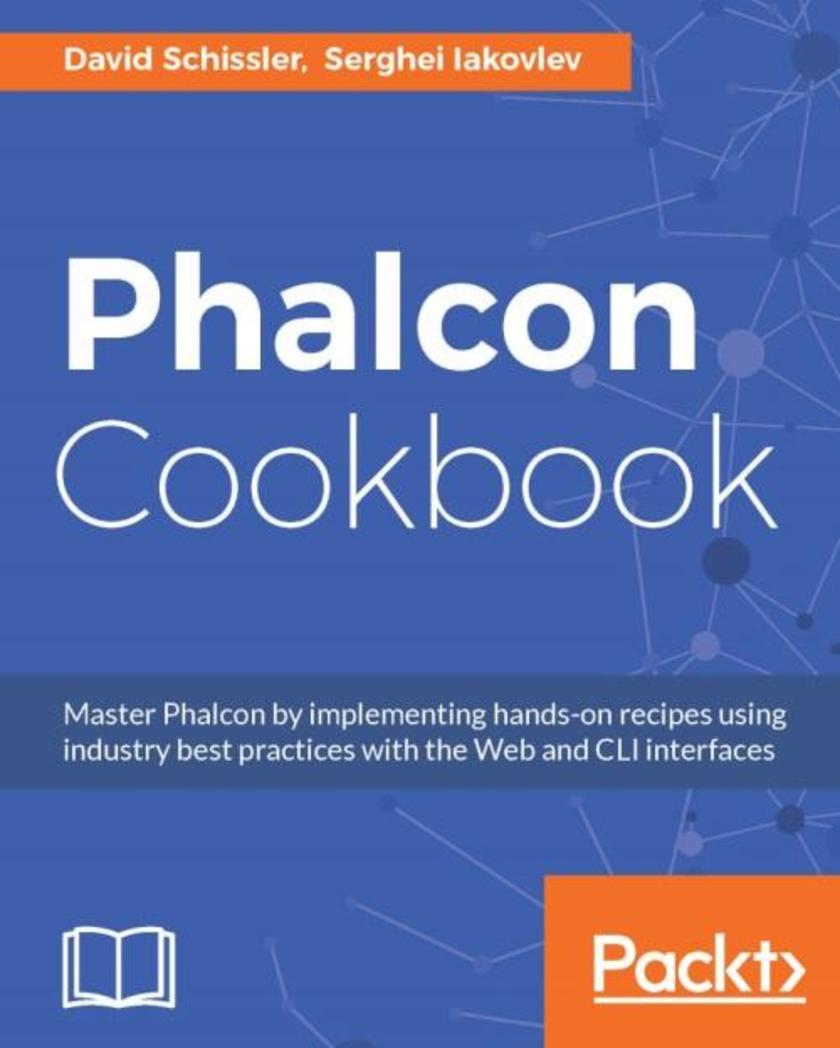
Phalcon Cookbook
¥71.93
Master Phalcon by implementing hands-on recipes using industry best practices with the Web and CLI interfaces About This Book Create quick prototypes with the Phalcon Developer Tools Learn to use the powerful and uniquely efficient Phalcon ORM Reuse codes in real projects Who This Book Is For If you are a beginner-to-intermediate Phalcon developer who wants to level up or an advanced user who is seeking some new techniques and insight, then this book is perfect for you. This book will be relevant to you over a long period of time due to the mixed nature of this book in providing both abstract comprehension as well as specific examples meant to be usable in your projects. You will be able to experiment with each new aspect of integration in prebuilt recipes meant to best illustrate each specific feature. This will save you lots of time getting up to speed before attempting to integrate into a real application. What You Will Learn Install the Phalcon extension from both premade packages and source code Create a normal and micro application structure Understand the dispatcher event cycle and create custom plugins Get hands-on using the Phalcon Query Language and ORM Create flexible views with the Volt template system Leverage Phalcon to prevent common security vulnerabilities Optimize an application with focused solutions Profile and debug an application to get increased reliability In Detail Phalcon is a high-performance PHP framework delivered as a PHP extension. This provides new opportunities for speed and application design, which until recently have been unrealized in the PHP ecosystem. Packed with simple learning exercises, technology prototypes, and real-world usable code, this book will guide you from the beginner and setup stage all the way to advanced usage. You will learn how to avoid niche pitfalls, how to use the command-line developer tools, how to integrate with new web standards, as well as how to set up and customize the MVC application structure. You will see how Phalcon can be used to quickly set up a single file web application as well as a complex multi-module application suitable for long-term projects. Some of the recipes focus on abstract concepts that are vital to get a deep comprehension of Phalcon and others are designed as a vehicle to deliver real-world usable classes and code snippets to solve advanced problems. You’ll start out with basic setup and application structure and then move onto the Phalcon MVC and routing implementation, the power of the ORM and Phalcon Query Language, and Phalcon’s own Volt templating system. Finally, you will move on to caching, security, and optimization. Style and approach An easy-to-start guide that provides
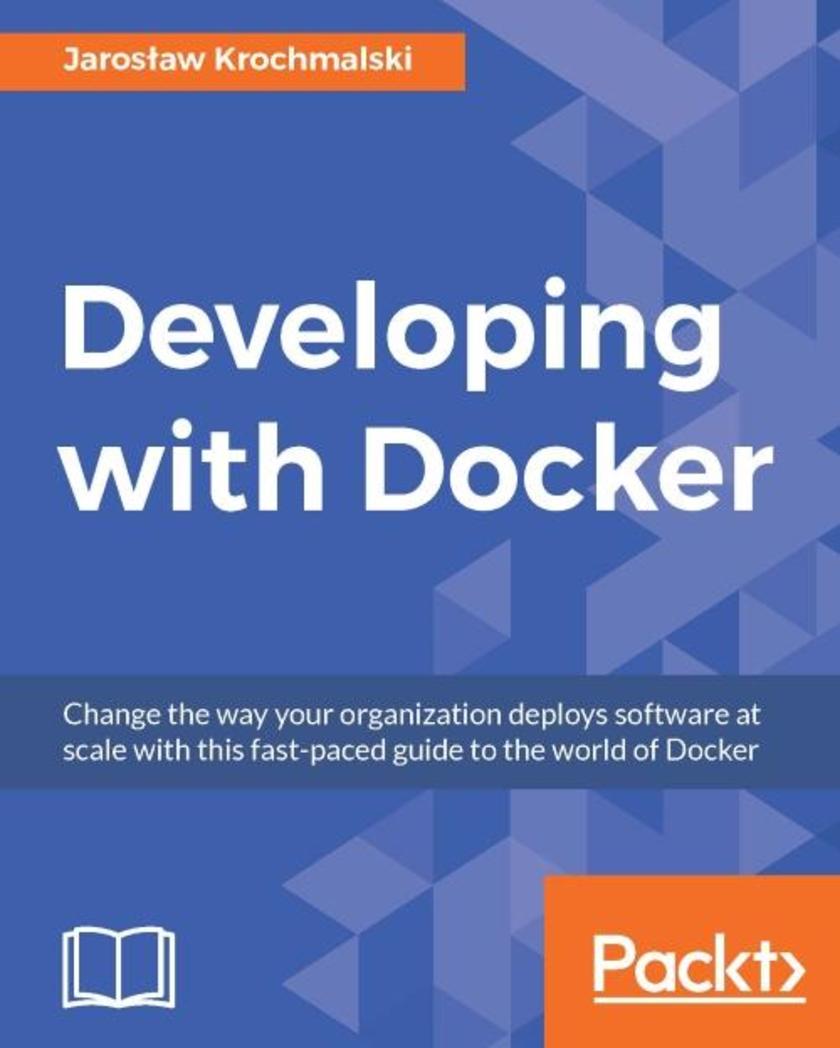
Developing with Docker
¥80.65
Change the way your organization deploys software at scale with this face paced guide to the world of Docker About This Book Cut through the noise and in simple terms learn to package your applications and test, ship, and scale your containers Find and build images and successfully run your programs within containers Build, deploy, and test your Docker containers and put them to work in production Who This Book Is For This book is for IT professionals, system administrators, and DevOps professionals or anyone looking to quickly develop and deploy software to production at scale. If you are interested in Docker, DevOps, or containers in general, don’t look any further. What You Will Learn Understand Docker’s architecture Build, ship, and run distributed applications Deploy, automate, and manage the execution of applications within Docker Scale and virtualize images and containers Utilize the networking features that Docker offers Use repositories to store and retrieve images In Detail This fast-paced practical guide will get you up and running with Docker. Using Docker, you will be able to build, ship, and run many distributed applications in real time. You will start with quickly installing Docker and start working with images and containers. We will present different types of containers and their applications, and show you how to find and build images. You will learn how you can contribute to the image repository by publishing different images. This will familiarize you with the image building process and you will be able to successfully run your programs within containers. By finishing this book, you will be well equipped in deploying your applications using Docker and will have a clear understanding of concepts, techniques, and practical methods to get it running in production systems. Style and approach This book takes a fast-paced practical approach that quickly gets you up and running with Docker so that you spend less time learning and more time deploying Docker containers effectively. This book contains a mix of concepts, practical examples, techniques, and the most up-to-date content to run things effectively in production. We’ll show you the easiest way to speed up your development and deployment with Docker.
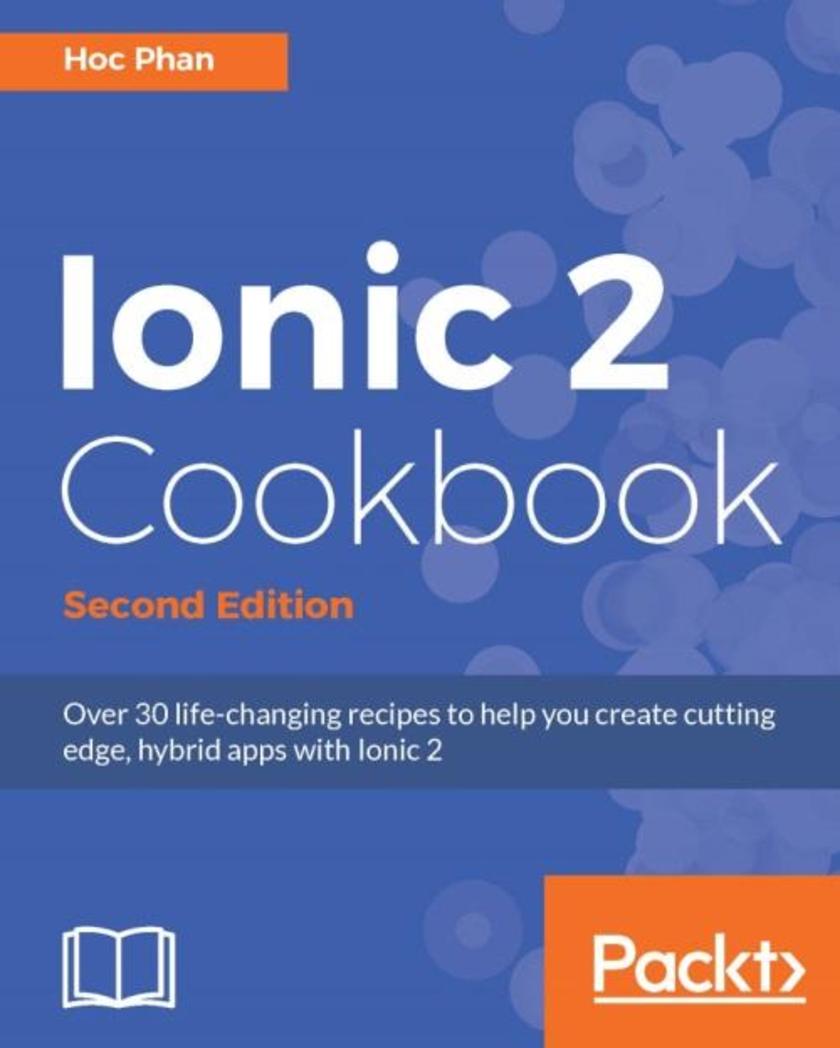
Ionic 2 Cookbook - Second Edition
¥80.65
Over 30 life-changing recipes to help you create cutting edge, hybrid apps with Ionic 2 About This Book Leverage Ionic 2 and its exciting new features to create cutting edge real-time apps Work through simple recipes to address your problems directly and solve them effectively Get examples at each step to guide you on your learning curve Who This Book Is For This book is for front end JavaScript developers who know the basics of JavaScript programming. No prior knowledge of Ionic is required to get the most of this book. What You Will Learn Create custom UIs using Angular 2 directives Make the best use of REST APIs to submit forms Create beautiful animations and graphics in the application Embed videos and other media into the app Access native device functionalities such as a camera and maps using ngCordova Theme the application based on the various platform styles available Publish your application to a variety of platforms Leverage Angular 2 events and Ionic-specific events to communicate In Detail Developing real-time apps is the need of the hour, and apps that deal with humongous amounts of user data and real-time information that needs to be updated frequently are in high demand. Currently, one of the most popular frameworks for this task is Ionic Framework, which is undergoing a major makeover. This book will get you started with Ionic and help you create Angular 2 components that interact with templates. From there, you’ll work with Ionic components and find out how to share data efficiently between them. You’ll discover how to make the best use of the REST API to handle back-end services and then move on to animating the application to make it look pretty. You’ll learn to add in a local push notification in order to test the app. You’ll work with Cordova to support native functionalities on both iOS and Android. From there, you’ll get to grips with using the default themes for each platform as well as customizing your own. Finally, you’ll see how best to deploy your app to different platforms. This book will solve all your Ionic-related issues through dedicated recipes that will help you get the best out of Ionic. Style and approach This book is a recipe-based solution to all your Ionic 2 related problems and will help you create cutting edge real-time apps with ease through simple-to-understand step-by-step recipes.
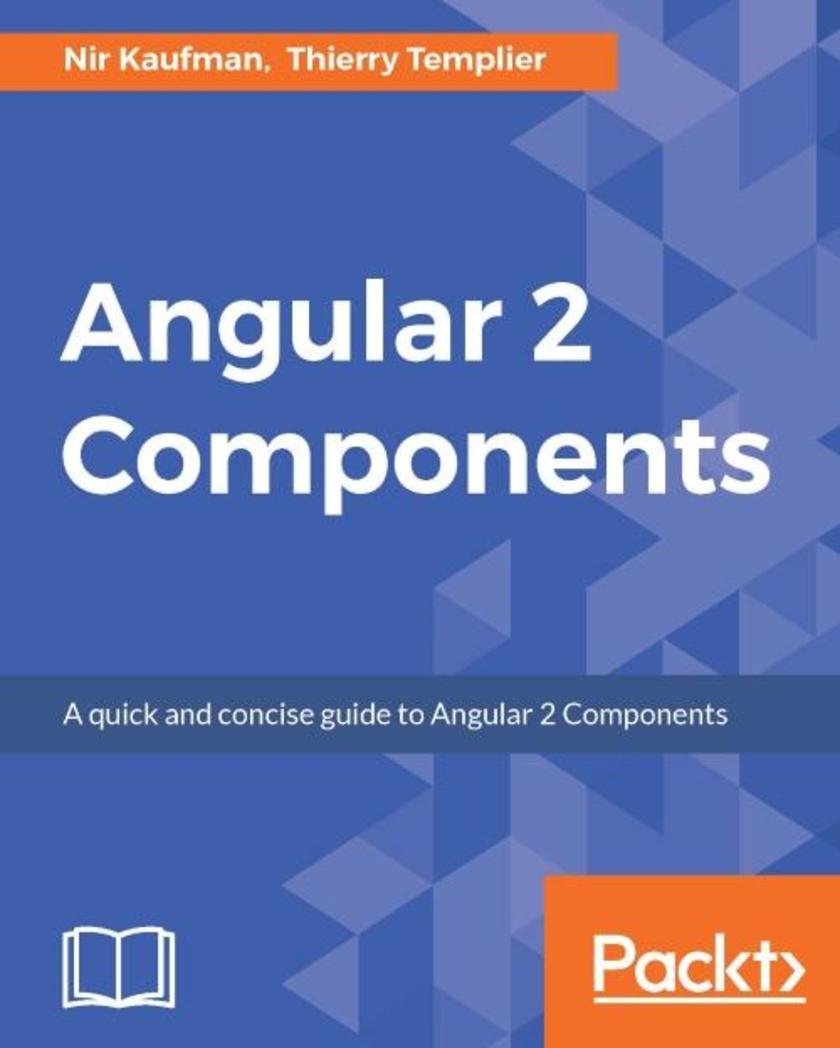
Angular 2 Components
¥54.49
A quick and concise guide to Angular 2 Components About This Book First look to the Angular 2 Components architecture Creating your own Angular 2 Component Integrating your components with third party components Who This Book Is For If you are a front-end developer with some experience in Angular and want to understand Angular 2 Components, and easily put it to use to create powerful user interfaces and views, then this book is for you What You Will Learn Break your application into reusable dynamic components Take advantage of TypeScript in Angular 2 Migrate your Angular 1 directive to an Angular 2 Component Understand the Angular 2 component structure and APIs Hook to component life cycle events Bind dynamic data to your component properties Communicate with other components using events Compose complicated UIs from simple components In Detail This book is a concise guide to Angular 2 Components and is based on the stable version of Angular 2. You will start with learning about the Angular 2 Components architecture and how components differ from Angular directives in Angular 1. You will then move on to quickly set up an Angular 2 development environment and grasp the basics of TypeScript. With this strong foundation in place, you will start building components. The book will teach you, with an example, how to define component behavior, create component templates, and use the controller of your component. You will also learn how to make your components communicate with each other. Once you have built a component, you will learn how to extend it by integrating third-party components with it. By the end of the book, you will be confident with building and using components for your applications. Style and approach A step-by-step guide covering features and working of Angular 2 Components along with the process for creating your own components.
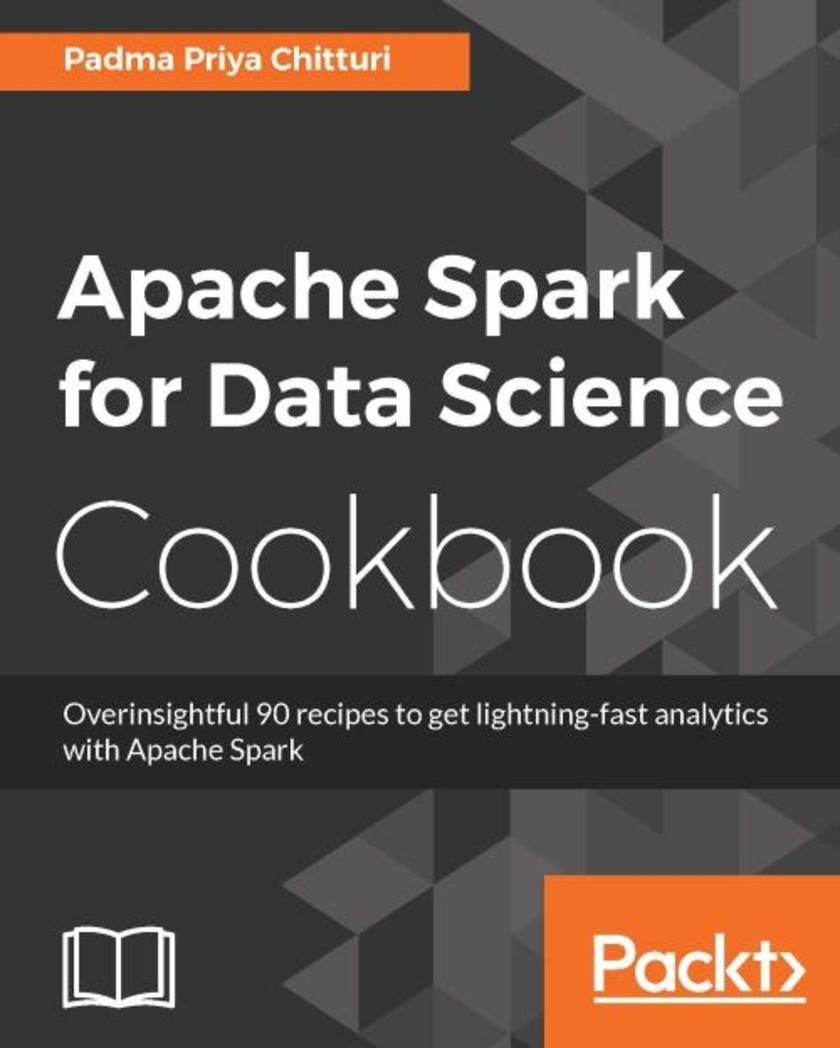
Apache Spark for Data Science Cookbook
¥80.65
Over insightful 90 recipes to get lightning-fast analytics with Apache Spark About This Book Use Apache Spark for data processing with these hands-on recipes Implement end-to-end, large-scale data analysis better than ever before Work with powerful libraries such as MLLib, SciPy, NumPy, and Pandas to gain insights from your data Who This Book Is For This book is for novice and intermediate level data science professionals and data analysts who want to solve data science problems with a distributed computing framework. Basic experience with data science implementation tasks is expected. Data science professionals looking to skill up and gain an edge in the field will find this book helpful. What You Will Learn Explore the topics of data mining, text mining, Natural Language Processing, information retrieval, and machine learning. Solve real-world analytical problems with large data sets. Address data science challenges with analytical tools on a distributed system like Spark (apt for iterative algorithms), which offers in-memory processing and more flexibility for data analysis at scale. Get hands-on experience with algorithms like Classification, regression, and recommendation on real datasets using Spark MLLib package. Learn about numerical and scientific computing using NumPy and SciPy on Spark. Use Predictive Model Markup Language (PMML) in Spark for statistical data mining models. In Detail Spark has emerged as the most promising big data analytics engine for data science professionals. The true power and value of Apache Spark lies in its ability to execute data science tasks with speed and accuracy. Spark’s selling point is that it combines ETL, batch analytics, real-time stream analysis, machine learning, graph processing, and visualizations. It lets you tackle the complexities that come with raw unstructured data sets with ease. This guide will get you comfortable and confident performing data science tasks with Spark. You will learn about implementations including distributed deep learning, numerical computing, and scalable machine learning. You will be shown effective solutions to problematic concepts in data science using Spark’s data science libraries such as MLLib, Pandas, NumPy, SciPy, and more. These simple and efficient recipes will show you how to implement algorithms and optimize your work. Style and approach This book contains a comprehensive range of recipes designed to help you learn the fundamentals and tackle the difficulties of data science. This book outlines practical steps to produce powerful insights into Big Data through a recipe-based approach.

NHibernate 4.x Cookbook - Second Edition
¥90.46
Over 90 incredible and powerful recipes to help you efficiently use NHibernate in your application About This Book · Master the full range of NHibernate features through detailed example recipes that you can quickly apply to your own applications· Reduce hours of application development time and get a better application architecture and improved performance· Create, maintain, and update your database structure automatically with the help of NHibernate Who This Book Is For This book is written for .NET developers who want to use NHibernate and those who want to deepen their knowledge of the platform. Examples are written in C# and XML. Some basic knowledge of SQL is assumed. If you build .NET applications that use relational databases, this book is for you. What You Will Learn · Create a persistent object model to move data in and out of your database· Build the database from your model automatically· Configure NHibernate for use with WebForms, MVC, WPF, and WinForms applications· Create database queries using a variety of methods· Improve the performance of your applications using a variety of techniques· Build an infrastructure for fast, easy, test-driven development of your data access layer· Implement entity validation, auditing, full-text search, horizontal partitioning (sharding), and spatial queries using NHibernate Contrib projects In Detail NHibernate is a mature, flexible, scalable, and feature-complete open source project for data access. Although it sounds like an easy task to build and maintain database applications, it can be challenging to get beyond the basics and develop applications that meet your needs perfectly. NHibernate allows you to use plain SQL and stored procedures less and keep focus on your application logic instead. Learning the best practices for a NHibernate-based application will help you avoid problems and ensure that your project is a success. The book will take you from the absolute basics of NHibernate through to its most advanced features, showing you how to take full advantage of each concept to quickly create amazing database applications. You will learn several techniques for each of the four core NHibernate tasks—configuration, mapping, session and transaction management, and querying—and which techniques fit best with various types of applications. In short, you will be able to build an application using NHibernate by the end of the book. You will also learn how to best implement enterprise application architecture patterns using NHibernate, leading to clean, easy-to-understand code and increased productivity. In addition to new features, you will learn creative ways to extend the NHibernate core, as well as gaining techniques to work with the NHibernate search, shards, spatial, envers, and validation projects. Style and approach This book contains recipes with examples organized in functional areas, each containing step-by-step instructions on everything necessary to execute a particular task. The book is designed so you can read it from start to end or just open up any chapter and start following the recipes.
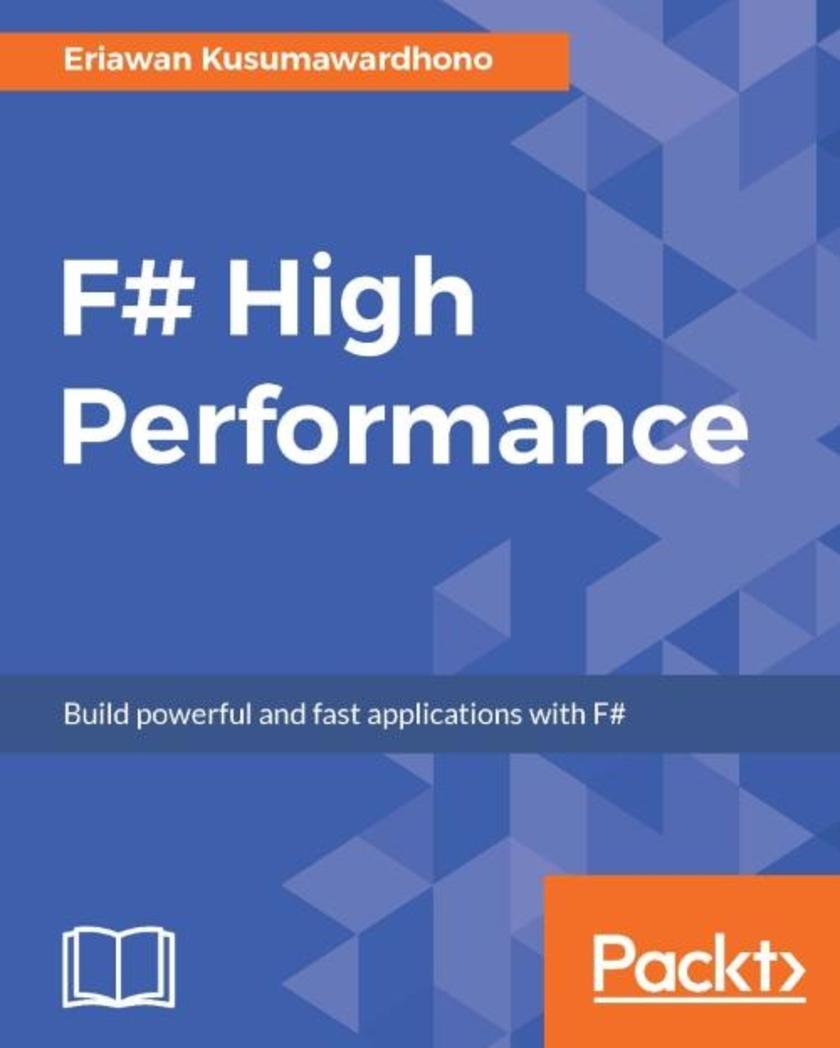
F# High Performance
¥80.65
Build powerful and fast applications with F# About This Book· Explore the advanced concurrency support in F# and .NET TPL·Covers major optimization techniques in F# to improve the performance of applications·Use Struct, Class and Record model, Interop with C# and VB without sacrificing performance. Who This Book Is For This book is for F# developers who want to build high-performance applications. Knowledge of functional programming would be helpful. What You Will Learn· Understand how the execution of functions in F# works·Identify common performance bottlenecks·Implement best practices to optimize performance·Use the available tooling to help measure performance·Combine the best practice of asynchronous and synchronous·Optimize further using various F# language constructs In Detail F# is a functional programming language and is used in enterprise applications that demand high performance. It has its own unique trait: it is a functional programming language and has OOP support at the same time. This book will help you make F# applications run faster with examples you can easily break down and take into your own work. You will be able to assess the performance of the program and identify bottlenecks. Beginning with a gentle overview of concurrency features in F#, you will get to know the advanced topics of concurrency optimizations in F#, such as F# message passing agent of MailboxProcessor and further interoperation with .NET TPL. Based on this knowledge, you will be able to enhance the performance optimizations when implementing and using other F# language features. The book also covers optimization techniques by using F# best practices and F# libraries. You will learn how the concepts of concurrency and parallel programming will help in improving the performance. With this, you would be able to take advantage of multi-core processors and track memory leaks, root causes, and CPU issues. Finally, you will be able to test their applications to achieve scalability. Style and approach This easy-to-follow guide is full of hands-on examples of real-world multithreading tasks. Each topic is explained and placed in context, and for the more inquisitive, there are also more in-depth details of the concepts used.
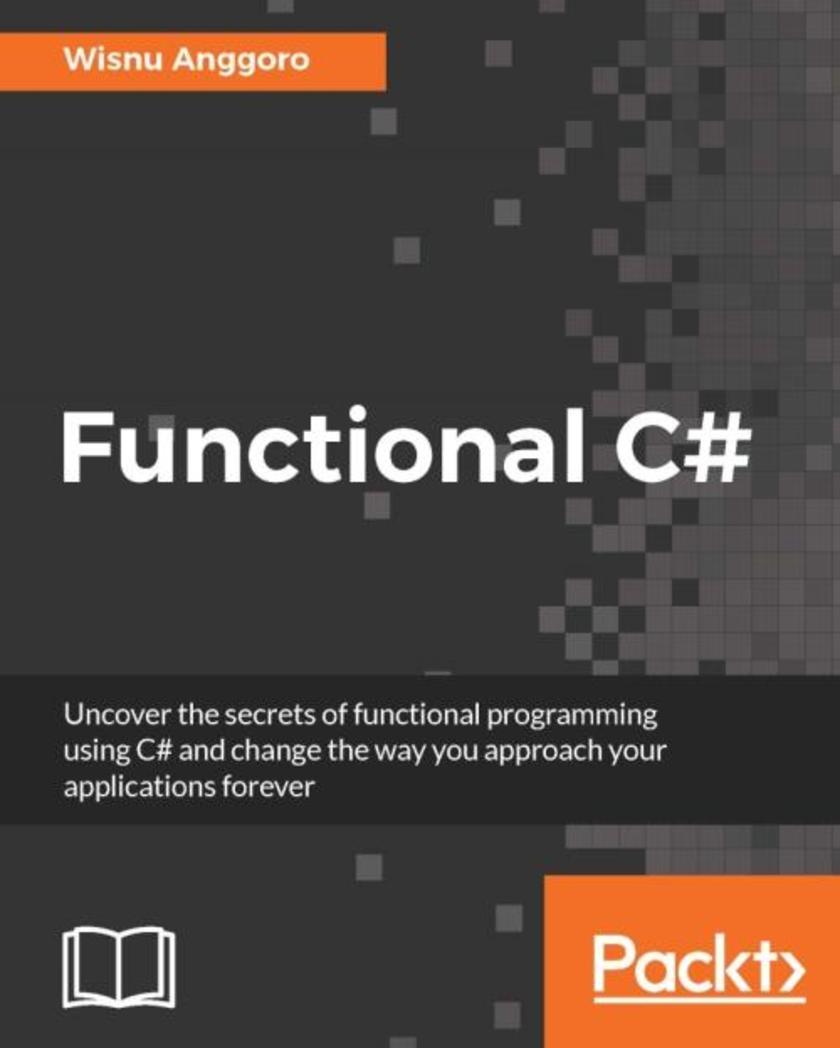
Functional C#
¥90.46
Uncover the secrets of functional programming using C# and change the way you approach your applications forever About This Book This book focuses on the functional paradigm of C#, which will give you a whole new angle on coding with C# It illustrates the advantages that functional programming brings to the table and the associated coding benefits This practical guide covers all the aspects of functional programming and provides solutions that can be applied in business scenarios Who This Book Is For This book is suitable for C# developers with basic prior knowledge of C# and with no functional programming experience at all. What You Will Learn Develop an application using the functional approach Implement unit testing to functionally program code Create efficient code using functional programming Work through a LINQ query so you can work with data Compose asynchronous programs to create a responsive application Use recursion in function programming in order to simplify code Optimize the program code using Laziness and Caching Techniques In Detail Functional programming makes your application faster, improves performance, and increases your productivity. C# code is written at a higher level of abstraction, so that code will be closer to business requirements, abstracting away many low-level implementation details. This book bridges the language gap for C# developers by showing you how to create and consume functional constructs in C#. We also bridge the domain gap by showing how functional constructs can be applied in business scenarios. We’ll take you through lambda expressions and extension methods, and help you develop a deep understanding of the concepts and practices of LINQ and recursion in C#. By the end of the book, you will be able to write code using the best approach and will be able to perform unit testing in functional programming, changing how you write your applications and revolutionizing your projects. Style and approach This book takes a pragmatic approach and shows you techniques to write better functional constructs in C#. We’ll also show you how these concepts can be applied in business scenarios.
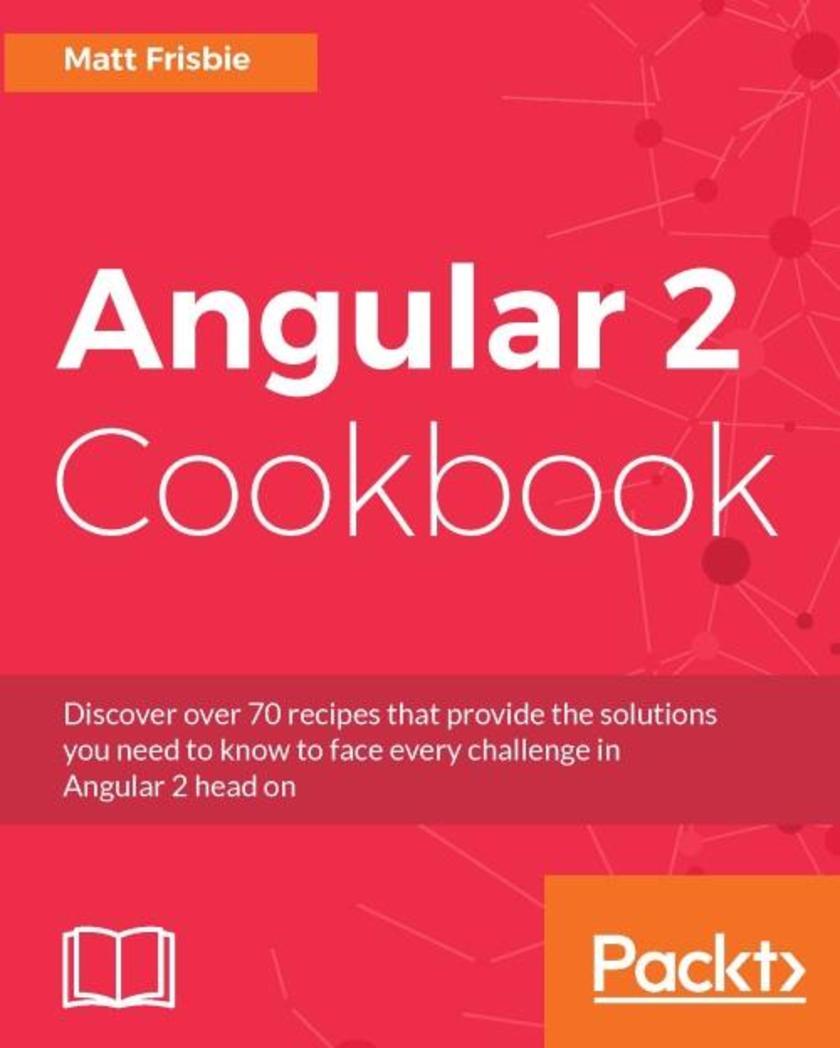
Angular 2 Cookbook
¥90.46
Discover over 70 recipes that provide the solutions you need to know to face every challenge in Angular 2 head on About This Book · A first-rate reference guide with a clear structure and intuitive index that gives you as a developer exactly the information you want in exactly the way you want it · Covers no legacy material from the outdated Angular release candidates; it is up-to-date with the latest release of Angular 2.4 · All the code in the book is explicitly written out, and every piece of code shown is a step towards building a simple working example Who This Book Is For This book is for developers who are competent with JavaScript and are looking to dive headfirst into the TypeScript edition of Angular 2. This book is also geared towards developers with experience in Angular 1 who are looking to make the transition. What You Will Learn · Understand how to best move an Angular 1 application to Angular 2 · Build a solid foundational understanding of the core elements of Angular 2 such as components, forms, and services · Gain an ability to wield complex topics such as Observables and Promises · Properly implement applications utilizing advanced topics such as dependency injection · Know how to maximize the performance of Angular 2 applications · Understand the best ways to take an Angular 2 application from TypeScript in a code editor to a fully function application served on your site · Get to know the best practices when organizing and testing a large Angular 2 application In Detail Angular 2 introduces an entirely new way to build applications. It wholly embraces all the newest concepts that are built into the next generation of browsers, and it cuts away all the fat and bloat from Angular 1. This book plunges directly into the heart of all the most important Angular 2 concepts for you to conquer. In addition to covering all the Angular 2 fundamentals, such as components, forms, and services, it demonstrates how the framework embraces a range of new web technologies such as ES6 and TypeScript syntax, Promises, Observables, and Web Workers, among many others. This book covers all the most complicated Angular concepts and at the same time introduces the best practices with which to wield these powerful tools. It also covers in detail all the concepts you'll need to get you building applications faster. Oft-neglected topics such as testing and performance optimization are widely covered as well. A developer that reads through all the content in this book will have a broad and deep understanding of all the major topics in the Angular 2 universe. Style and approach This book follows a cookbook approach—each recipe presents a unique problem to which the solution is presented in a clear, concise, and manner step-by-step manner. With practical hands-on guidance in each and every recipe, you’ll be able to get to grips with the concepts.
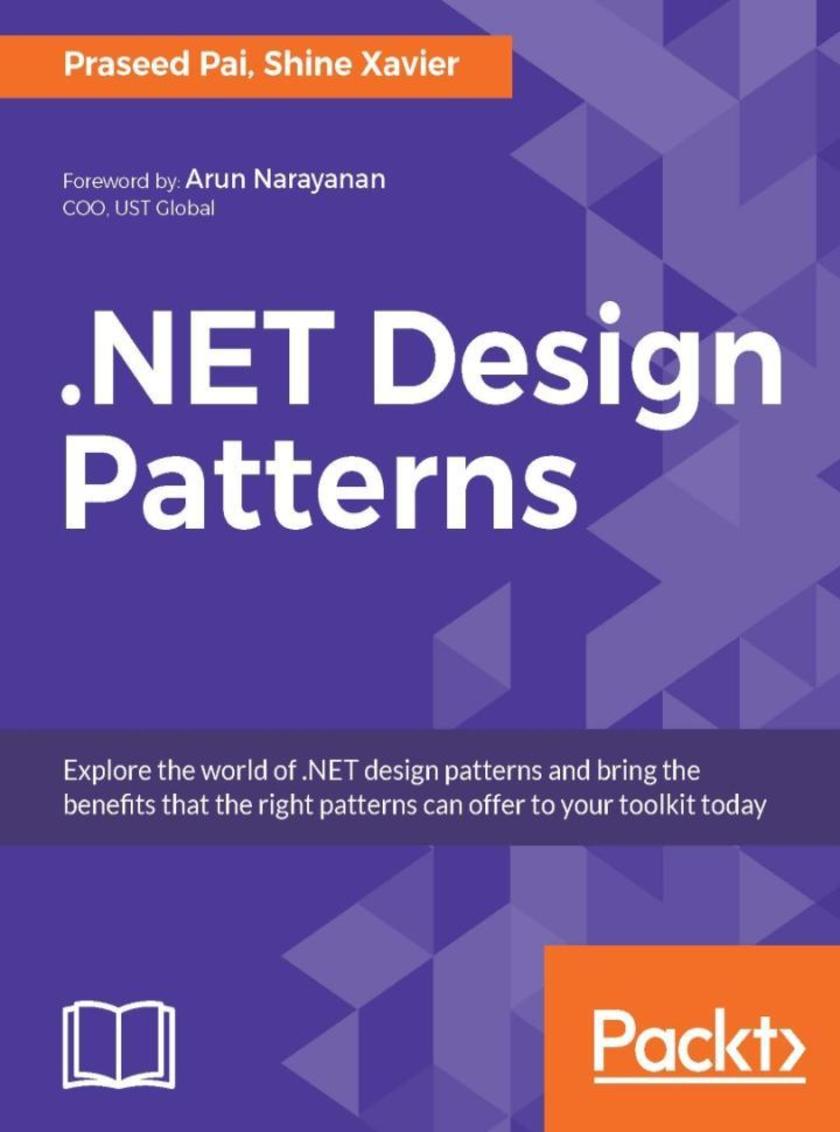
.NET Design Patterns
¥71.93
Explore the world of .NET design patterns and bring the benefits that the right patterns can offer to your toolkit today About This Book This book is based on the latest version of .NET, .NET Core 1.0.·The code is explained piece by piece and the application of the pattern is also showcased. This fast-paced guide shows you how to implement the patterns into your existing applications Who This Book Is For This book is for those with familiarity with .NET development who would like to take their skills to the next level and be in the driver's seat when it comes to modern development techniques. Basic object-oriented C# programming experience and an elementary familiarity with the .NET framework library is required. What You Will Learn Put patterns and pattern catalogs into the right perspective Apply patterns for software development under C#/.NET Use GoF and other patterns in real-life development scenarios Be able to enrich your design vocabulary and well articulate your design thoughts Leverage object/functional programming by mixing OOP and FP Understand the reactive programming model using Rx and RxJs Writing compositional code using C# LINQ constructs Be able to implement concurrent/parallel programming techniques using idioms under .NET Avoiding pitfalls when creating compositional, readable, and maintainable code using imperative, functional, and reactive code. In Detail Knowing about design patterns enables developers to improve their code base, promoting code reuse and making their design more robust. This book focuses on the practical aspects of programming in .NET. You will learn about some of the relevant design patterns (and their application) that are most widely used. We start with classic object-oriented programming (OOP) techniques, evaluate parallel programming and concurrency models, enhance implementations by mixing OOP and functional programming, and finally to the reactive programming model where functional programming and OOP are used in synergy to write better code. Throughout this book, we'll show you how to deal with architecture/design techniques, GoF patterns, relevant patterns from other catalogs, functional programming, and reactive programming techniques. After reading this book, you will be able to convincingly leverage these design patterns (factory pattern, builder pattern, prototype pattern, adapter pattern, facade pattern, decorator pattern, observer pattern and so on) for your programs. You will also be able to write fluid functional code in .NET that would leverage concurrency and parallelism! Style and approach This tutorial-based book takes a step-by-step approach. It covers the major patterns and explains them in a detailed manned along with code examples.
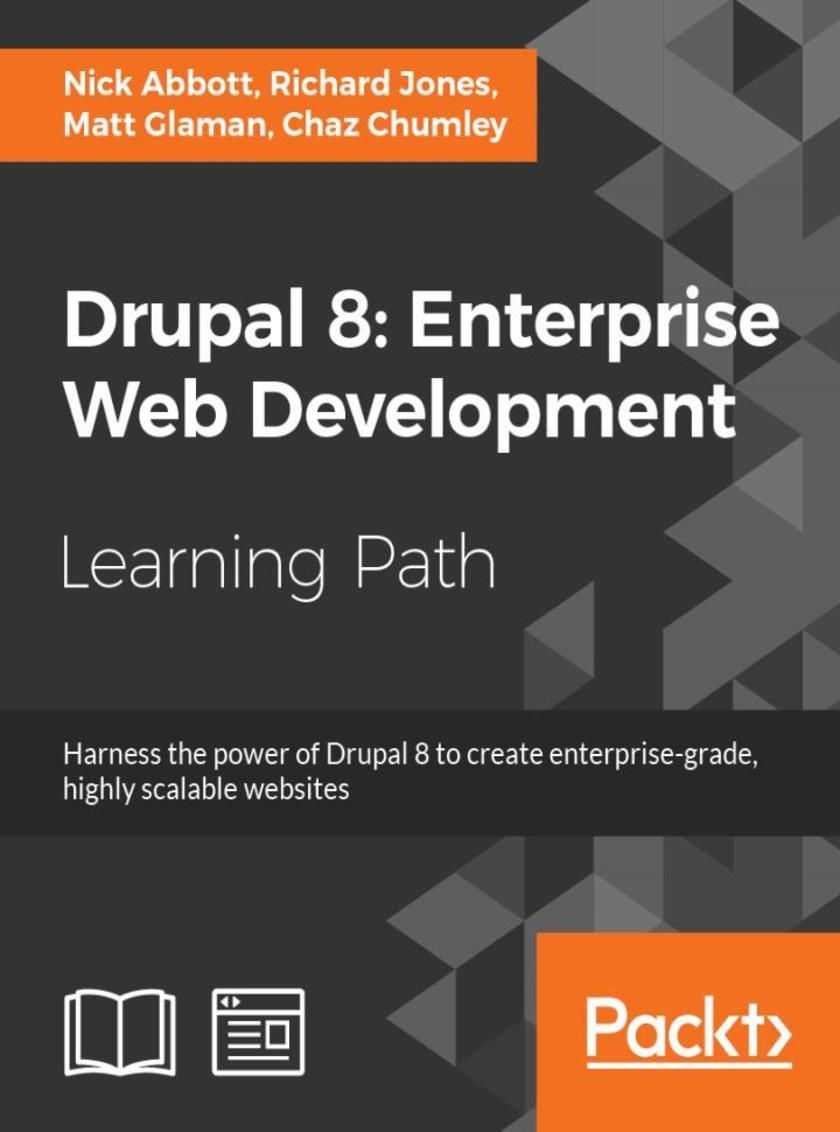
Drupal 8: Enterprise Web Development
¥179.84
Harness the power of Drupal 8 to create enterprise-grade, highly scalable websites About This Book Build complete, complex websites with no prior knowledge of web development entirely using the intuitive Drupal user interface Ensure your sites are modern, responsive and mobile-friendly through utilizing the full features available in Drupal 8 Quickly master theme administration, custom block layouts, views, and the Twig template structure Who This Book Is For This course is suitable for web developers, designers, as well as web administrators who are keen on building modern, scalable websites using Drupal 8 and its wide range of new features. What You Will Learn Set up a local “stack” development environment and install your first Drupal 8 site Find out what is available in the Drupal 8 core Integrate third-party front-end and back-end libraries with Drupal Understand the plugin system that powers many of Drupal 8's new APIs to extend its functionality Build custom block layouts with reusable and fieldable blocks Work with the new Twig PHP templating engine Develop a theme from scratch following a step-by-step project outline In Detail This Drupal 8 course takes you through the journey of building, extending, and customizing websites to build highly scalable and enterprise-ready websites. The first part—Learning Drupal 8—takes you step by step through building a Drupal 8 website. You will start with the basics, such as setting up a local “stack” development environment and installing your first Drupal 8 site, then we move on to image and media handling and extending Drupal modules. This section will help you get to grips with the modular nature of Drupal, and you’ll learn how to extend it by adding new functionalities to create your new modules. After learning to develop and manage a modern and responsive website using Drupal 8, you’ll start exploring different techniques to take advantage of the new Drupal 8 features. The next module—Drupal 8 Development Cookbook—is your go-to guide to experimenting with all of Drupal 8’s features through helpful recipes. You will explore techniques to customize and configure the Drupal environment, create blocks and custom modules, as well as make your web apps responsive by harnessing the mobile-first feature of Drupal 8. This module will also show you how to incorporate multilingual facilities in your sites, use web services and third-party plugins with your applications from inside Drupal 8, and test and deploy your apps. In the third part—Drupal 8 Theming with Twig—you will master Drupal 8’s new Twig templating engine to customize the look and feel of your website. This section will walk you through a real-world project to create a Twig theme from concept to completion while adopting best practices to implement CSS frameworks and JavaScript libraries. You will see just how quick and easy it is to create beautiful, responsive Drupal 8 websites while avoiding the common mistakes that many front-end developers make. By the end, you will have learned how to develop, manage, extend, and customize an enterprise-level website. This Learning Path combines some of the best that Packt has to offer in one complete, curated package. It includes content from the following Packt products: Learning Drupal 8 by Nick Abbott and Richard Jones Drupal 8 Development Cookbook by Matt Glaman Drupal 8 Theming with Twig by Chaz Chumley Style and approach This course offers a thorough coverage of developing, managing, extending, and designing highly scalable websites using the Drupal 8 platform. Filled with practical examples and recipes, this course is a great combination of example-driven learning complemented by interesting techniques to take advantage of the Drupal platform.
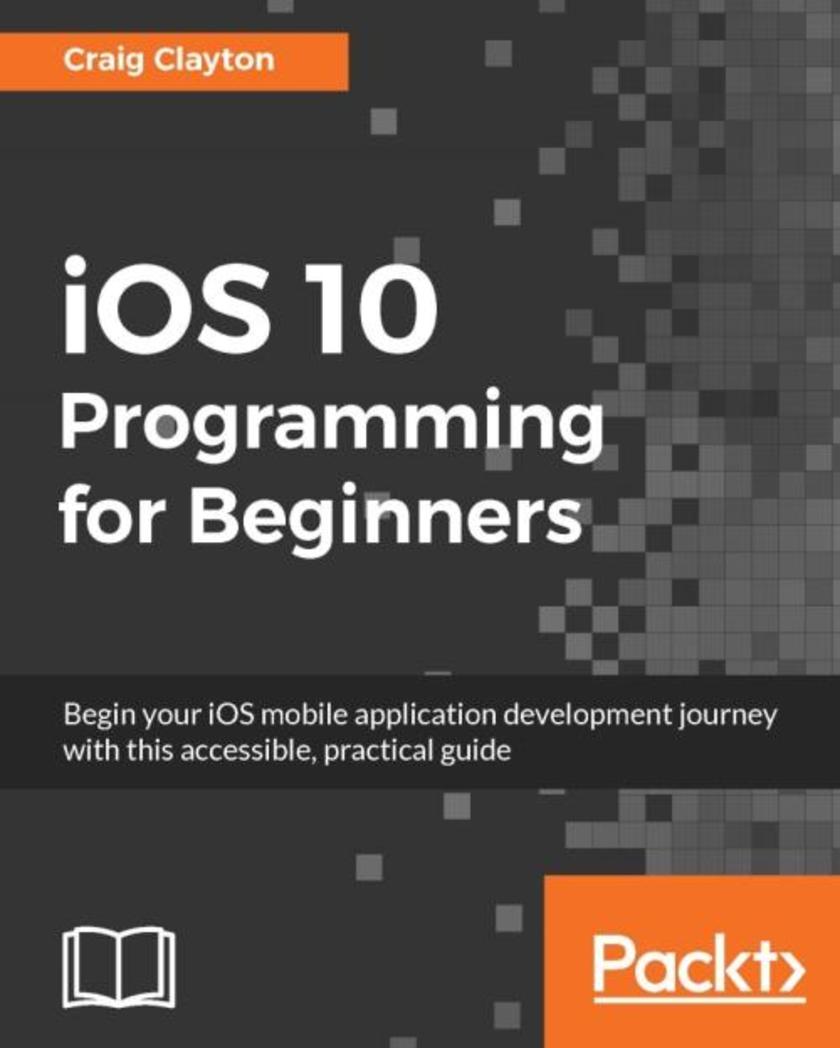
iOS 10 Programming for Beginners
¥90.46
Begin your iOS mobile application development journey with this accessible, practical guide About This Book Use Swift 3 and latest iOS 10 features to build awesome apps for iPhone and iPad Explore and use a wide range of Apple development tools to become a confident iOS developer From prototype to App Store—find out how to build an app from start to finish! Who This Book Is For This book is for beginners who want to be able to create iOS applications. If you have some programming experience, this book is a great way to get a full understanding of how to create an iOS application from scratch and submit it to the App Store. You do not need any knowledge of Swift or any prior programming experience. What You Will Learn Get to grips with Swift 3 and Xcode, the building blocks of Apple development Get to know the fundamentals of Swift, including variables, constants, and control flow Discover the distinctive design principles that define the iOS user experience See how to prototype your app with Swift’s Playgrounds feature Build a responsive UI that looks great on a range of devices Find out how to use CoreLocation to add location services to your app Add push notifications to your app Make your app able to be used on both iPhone and iPad In Detail You want to build iOS applications for iPhone and iPad—but where do you startForget sifting through tutorials and blog posts, this is a direct route into iOS development, taking you through the basics and showing you how to put the principles into practice. With every update, iOS has become more and more developer-friendly, so take advantage of it and begin building applications that might just take the App Store by storm! Whether you’re an experienced programmer or a complete novice, this book guides you through every facet of iOS development. From Xcode and Swift—the building blocks of modern Apple development—and Playgrounds for beginners, one of the most popular features of the iOS development experience, you’ll quickly gain a solid foundation to begin venturing deeper into your development journey. For the experienced programmer, jump right in and learn the latest iOS 10 features. You’ll also learn the core elements of iOS design, from tables to tab bars, as well as more advanced topics such as gestures and animations that can give your app the edge. Find out how to manage databases, as well as integrating standard elements such as photos, GPS into your app. With further guidance on beta testing with TestFlight, you’ll quickly learn everything you need to get your project on the App Store! Style and approach Created for anyone that wants to build their first iOS application, this book offers practical, actionable guidance through iOS development. Combining engaging visuals with accessible, step-by-step instructiona and explanation, this book will not only develop the your understanding, but also show you how to put your knowledge to work.
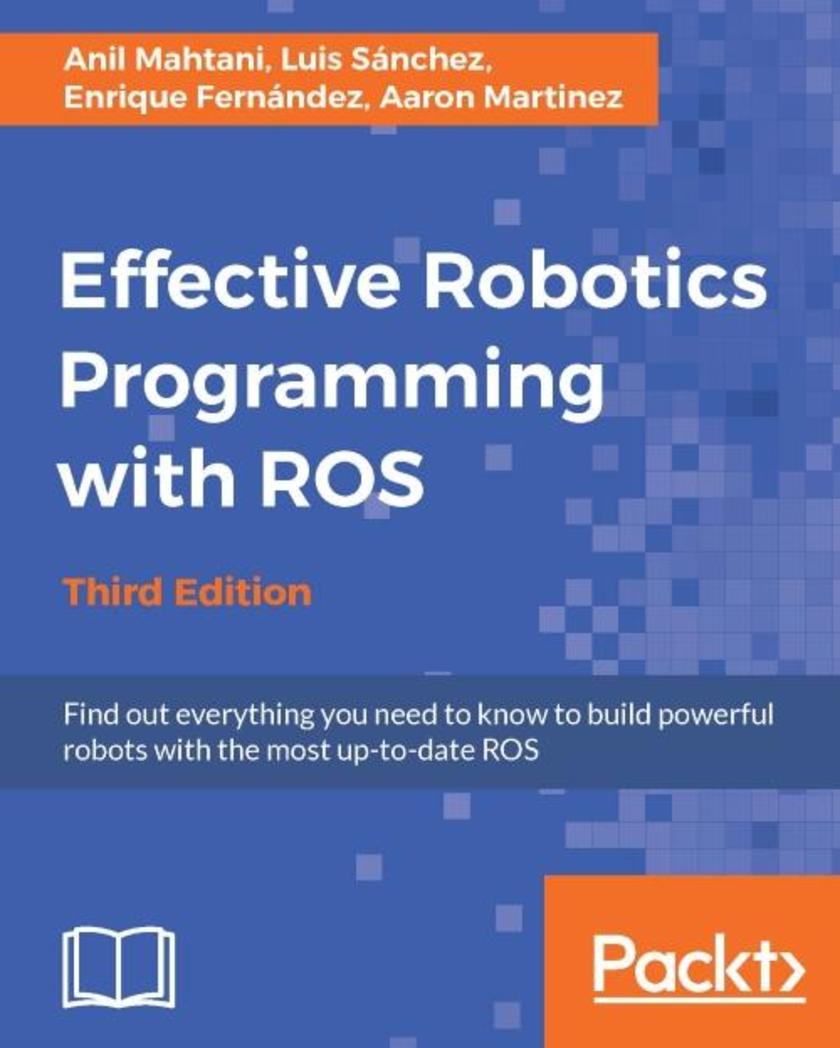
Effective Robotics Programming with ROS - Third Edition
¥90.46
Find out everything you need to know to build powerful robots with the most up-to-date ROS About This Book This comprehensive, yet easy-to-follow guide will help you find your way through the ROS framework Successfully design and simulate your 3D robot model and use powerful robotics algorithms and tools to program and set up your robots with an unparalleled experience by using the exciting new features from Robot Kinetic Use the latest version of gazebo simulator, OpenCV 3.0, and C++11 standard for your own algorithms Who This Book Is For This book is suitable for an ROS beginner as well as an experienced ROS roboticist or ROS user or developer who is curious to learn ROS Kinetic and its features to make an autonomous Robot. The book is also suitable for those who want to integrate sensors and embedded systems with other software and tools using ROS as a framework. What You Will Learn Understand the concepts of ROS, the command-line tools, visualization GUIs, and how to debug ROS Connect robot sensors and actuators to ROS Obtain and analyze data from cameras and 3D sensors Use Gazebo for robot/sensor and environment simulation Design a robot and see how to make it map the environment, navigate autonomously, and manipulate objects in the environment using MoveIt! Add vision capabilities to the robot using OpenCV 3.0 Add 3D perception capabilities to the robot using the latest version of PCL In Detail Building and programming a robot can be cumbersome and time-consuming, but not when you have the right collection of tools, libraries, and more importantly expert collaboration. ROS enables collaborative software development and offers an unmatched simulated environment that simplifies the entire robot building process. This book is packed with hands-on examples that will help you program your robot and give you complete solutions using open source ROS libraries and tools. It also shows you how to use virtual machines and Docker containers to simplify the installation of Ubuntu and the ROS framework, so you can start working in an isolated and control environment without changing your regular computer setup. It starts with the installation and basic concepts, then continues with more complex modules available in ROS such as sensors and actuators integration (drivers), navigation and mapping (so you can create an autonomous mobile robot), manipulation, Computer Vision, perception in 3D with PCL, and more. By the end of the book, you’ll be able to leverage all the ROS Kinetic features to build a fully fledged robot for all your needs. Style and approach This book is packed with hands-on examples that will help you program your robot and give you complete solutions using ROS open source libraries and tools. All the robotics concepts and modules are explained and multiple examples are provided so that you can understand them easily.
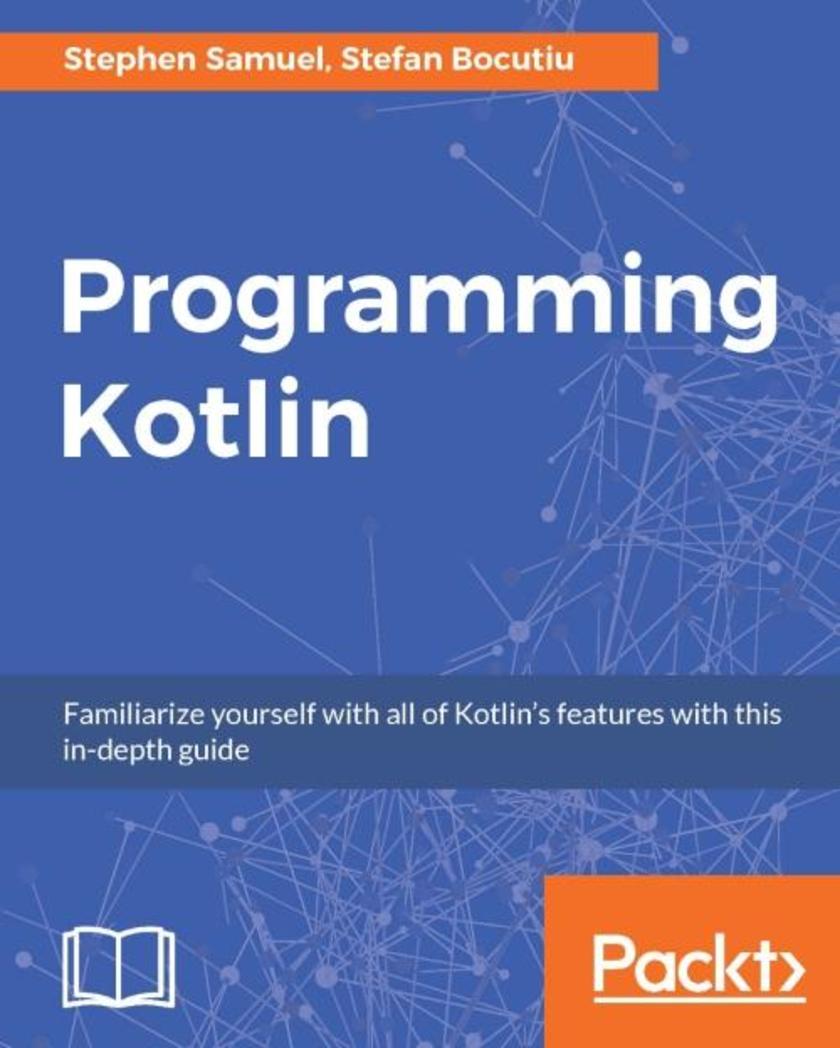
Programming Kotlin
¥80.65
Familiarize yourself with all of Kotlin’s features with this in-depth guide About This Book Get a thorough introduction to Kotlin Learn to use Java code alongside Kotlin without any hiccups Get a complete overview of null safety, Generics, and many more interesting features Who This Book Is For The book is for existing Java developers who want to learn more about an alternative JVM language. If you want to see what Kotlin has to offer, this book is ideal for you. What You Will Learn Use new features to write structured and readable object-oriented code Find out how to use lambdas and higher order functions to write clean, reusable, and simple code Write unit tests and integrate Kotlin tests with Java code in a transitioning code base Write real-world production code in Kotlin in the style of microservices Leverage Kotlin’s extensions to the Java collections library Use destructuring expressions and find out how to write your own Write code that avoids null pointer errors and see how Java-nullable code can integrate with features in a Kotlin codebase Discover how to write functions in Kotlin, see the new features available, and extend existing libraries Learn to write an algebraic data types and figure out when they should be used In Detail Kotlin has been making waves ever since it was open sourced by JetBrains in 2011; it has been praised by developers across the world and is already being adopted by companies. This book provides a detailed introduction to Kotlin that shows you all its features and will enable you to write Kotlin code to production. We start with the basics: get you familiar with running Kotlin code, setting up, tools, and instructions that you can use to write basic programs. Next, we cover object oriented code: functions, lambdas, and properties – all while using Kotlin’s new features. Then, we move on to null safety aspects and type parameterization. We show you how to destructure expressions and even write your own. We also take you through important topics like testing, concurrency, microservices, and a whole lot more. By the end of this book you will be able to compose different services and build your own applications. Style and approach An easy to follow guide that covers the full set of features in Kotlin programming.
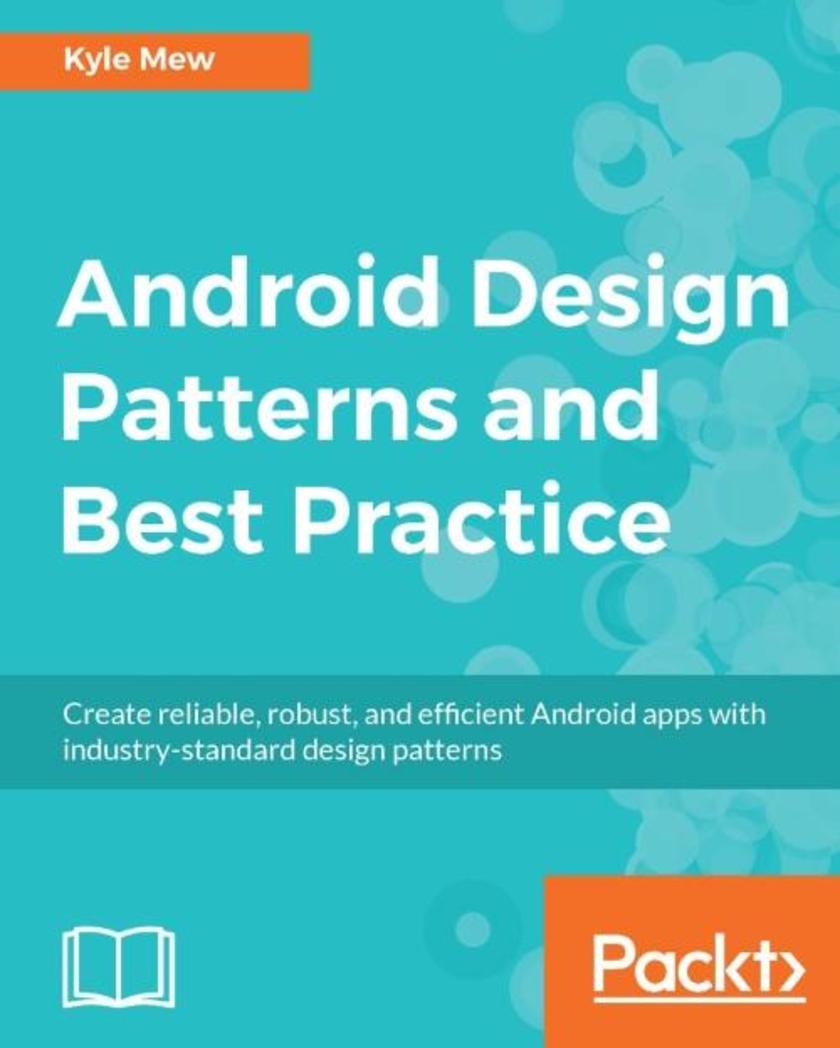
Android Design Patterns and Best Practice
¥80.65
Create reliable, robust, and efficient Android apps with industry-standard design patterns About This Book Create efficient object interaction patterns for faster and more efficient Android development Get into efficient and fast app development and start making money from your android apps Implement industry-standard design patterns and best practices to reduce your app development time drastically Who This Book Is For This book is intended for Android developers who have some basic android development experience. Basic Java programming knowledge is a must to get the most out of this book. What You Will Learn Build a simple app and run it on real and emulated devices Explore the WYSIWYG and XML approaches to material design provided within Android Studio Detect user activities by using touch screen listeners, gesture detection, and reading sensors Apply transitions and shared elements to employ elegant animations and efficiently use the minimal screen space of mobile devices Develop apps that automatically apply the best layouts for different devices by using designated directories Socialize in the digital word by connecting your app to social media Make your apps available to the largest possible audience with the AppCompat support library In Detail Are you an Android developer with some experience under your beltAre you wondering how the experts create efficient and good-looking appsThen your wait will end with this book! We will teach you about different Android development patterns that will enable you to write clean code and make your app stand out from the crowd. The book starts by introducing the Android development environment and exploring the support libraries. You will gradually explore the different design and layout patterns and get to know the best practices of how to use them together. Then you’ll then develop an application that will help you grasp activities, services, and broadcasts and their roles in Android development. Moving on, you will add user-detecting classes and APIs such as gesture detection, touch screen listeners, and sensors to your app. You will also learn to adapt your app to run on tablets and other devices and platforms, including Android Wear, auto, and TV. Finally, you will see how to connect your app to social media and explore deployment patterns as well as the best publishing and monetizing practices. The book will start by introducing the Android development environment and exploring the support libraries. You will gradually explore the different Design and layout patterns and learn the best practices on how to use them together. You will then develop an application that will help you grasp Activities, Services and Broadcasts and their roles in Android development. Moving on, you will add user detecting classes and APIs such as at gesture detection, touch screen listeners and sensors to our app. You will also learn to adapt your app to run on tablets and other devices and platforms, including Android Wear, Auto, and TV. Finally, you will learn to connect your app to social media and explore deployment patterns and best publishing and monetizing practices. Style and approach This book takes a step-by-step approach. The steps are explained using real-world practical examples. Each chapter uses case studies where we show you how using design patterns will help in your development process.

Tableau Cookbook – Recipes for Data Visualization
¥90.46
Create beautiful data visualizations and interactive dashboards with Tableau About This Book Delve into the features and functionalities of Tableau from the ground up with this step-by-step guide that has over 50 "follow-me" recipes Build rich visualizations to effectively highlight the underlying trends and patterns in your data Build beautiful interactive dashboards and storyboards to stitch your visualizations together and tell a story Who This Book Is For This book is for anyone who wishes to use Tableau. It will be of use to both beginners who want to learn Tableau from scratch and to more seasoned users who simply want a quick reference guide. This book is a ready reckoner guide for you. The book will be such that both new & existing Tableau users who don’t know, or can’t recall how to perform different Tableau tasks can use the book and be benefited from it. What You Will Learn Get to grips with the Tableau workspace and terminologies and understand what data sources you can connect Learn to create basic charts like bar chart, stacked bar, pie chart, line chart, area chart, tree map & word cloud Go even further with more advanced visualizations such as scatter plot, box & whiskers plot, dual axis, bullet chart, Histograms, Maps, etc Use pre-defined calculation and change its scope and direction to affect outcome Learn to define Parameters and call them into parametric calculations that provide outcomes based on user inputs Build Dashboards and use Actions to link multiple sheets on the dashboard Connect to multiple data sources using Data Blending, Multiple Table Join within the same data source as well as across data sources, Custom SQL and learn to work with data Extracts Compute statistical trends, build forecasting models and use Reference lines for benchmarking In Detail Data is everywhere and everything is data! Visualization of data allows us to bring out the underlying trends and patterns inherent in the data and gain insights that enable faster and smarter decision making. Tableau is one of the fastest growing and industry leading Business Intelligence platforms that empowers business users to easily visualize their data and discover insights at the speed of thought. Tableau is a self-service BI platform designed to make data visualization and analysis as intuitive as possible. Creating visualizations with simple drag-and-drop, you can be up and running on Tableau in no time. Starting from the fundamentals such as getting familiarized with Tableau Desktop, connecting to common data sources and building standard charts; you will walk through the nitty gritty of Tableau such as creating dynamic analytics with parameters, blended data sources, and advanced calculations. You will also learn to group members into higher levels, sort the data in a specific order & filter out the unnecessary information. You will then create calculations in Tableau & understand the flexibility & power they have and go on to building story-boards and share your insights with others. Whether you are just getting started or whether you need a quick reference on a "how-to" question, This book is the perfect companion for you Style and approach This cookbook takes a step-by-step approach and the text systematically evolves to cover more involved functionalities. Every recipe includes illustrative screenshots which provide a detailed visual resource for each step.
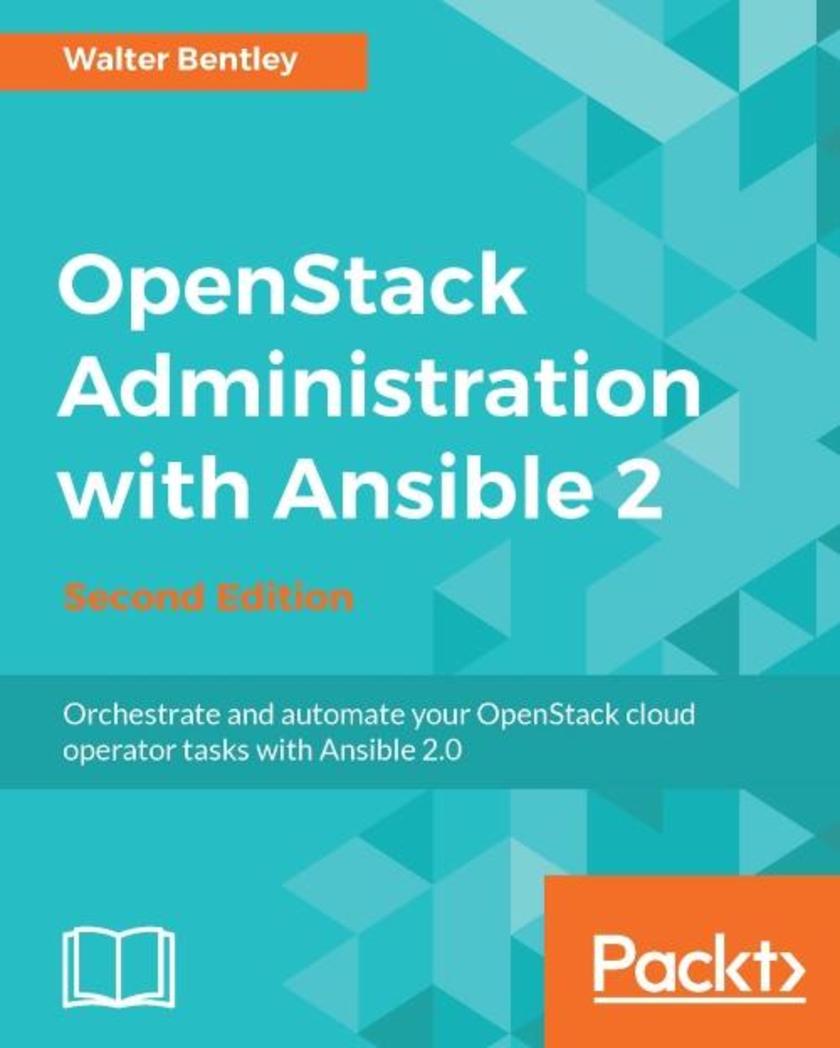
OpenStack Administration with Ansible 2 - Second Edition
¥71.93
Orchestrate and automate your OpenStack cloud operator tasks with Ansible 2.0 About This Book Automate real-world OpenStack cloud operator administrative tasks Construct a collection of the latest automation code to save time on managing your OpenStack cloud Manage containers on your cloud and check the health of your cloud using Nagios Who This Book Is For This book is aimed at OpenStack-based cloud operators and infrastructure and sys administrators who have some knowledge of OpenStack and are seeking to automate taxing and manual tasks. This book is also for people new to automating cloud operations in general and the DevOps practice in particular. What You Will Learn Efficiently execute OpenStack administrative tasks Familiarize yourself with how Ansible 2 works and assess the defined best practices Create Ansible 2 playbooks and roles Automate tasks to customize your OpenStack cloud Review OpenStack automation considerations when automating administrative tasks Examine and automate advanced OpenStack tasks and designated use cases Get a high-level overview of OpenStack and current production-ready projects Explore OpenStack CLI tools and learn how to use them In Detail Most organizations are seeking methods to improve business agility because they have realized just having a cloud is not enough. Being able to improve application deployments, reduce infrastructure downtime, and eliminate daily manual tasks can only be accomplished through some sort of automation. We start with a brief overview of OpenStack and Ansible 2 and highlight some best practices. Each chapter will provide an introduction to handling various Cloud Operator administration tasks such as managing containers within your cloud; setting up/utilizing open source packages for monitoring; creating multiple users/tenants; taking instance snapshots; and customizing your cloud to run multiple active regions. Each chapter will also supply a step-by-step tutorial on how to automate these tasks with Ansible 2. Packed with real-world OpenStack administrative tasks, this book will walk you through working examples and explain how these tasks can be automated using one of the most popular open source automation tools on the market today. Style and approach This book is a concise, fast-paced guide filled with real-world scenarios that will execute OpenStack administrative tasks efficiently. It serves as a quick reference guide for not just OpenStack functions, but also for creating future Ansible code.




 购物车
购物车 个人中心
个人中心



